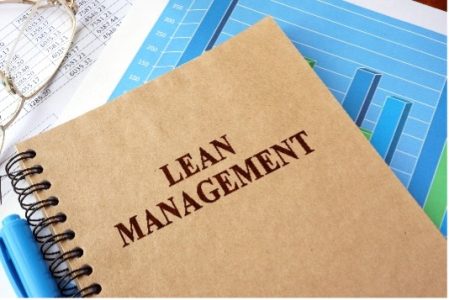Widgetized Section
Go to Admin » Appearance » Widgets » and move Gabfire Widget: Social into that MastheadOverlay zone
How do Public Administrators Learn to Lean Bureaucracy?
The views expressed are those of the author and do not necessarily reflect the views of ASPA as an organization.
By Kate McGovern
May 22, 2023

I got my Master’s in Public Administration (MPA) long before The Machine that Changed the World and Toyota Kata were written. Decades later I learned about Lean process improvement and the Toyota Production System while working for the State of New Hampshire. As I’ve discussed in previous columns, the techniques and principles of continuous improvement (CI) are crucial to the public sector. Yet, they are more commonly taught in business and engineering schools than in public administration or political science programs. Students most likely to learn about CI are generally preparing for careers in the private sector.
Arguably, courses in process improvement should be a standard part of the curriculum in all MPA programs. The quandary is that Lean and Toyota Kata occupy a space between business management, public administration and human behavior. The study requires navigating where the academic world meets the pragmatic—where theory meets practice.
In The Lenses of Lean James Womack, John Shook, Peter Ward and Josh Howell explained that “research has lagged practice because Lean thinking and practice cross traditional academic disciplinary boundaries. Just as Lean practice crosses organizational silos by necessity, so there is a need for research that crosses the boundaries of academic disciplines.” Rachna Shah and Matthias Holweg observed that “the myopic view of equating Lean with efficiency prevails in both academia and practice… While the philosophy of Lean was developed at Toyota in a manufacturing context, its logic was inherently transferrable and could be adopted beyond repetitive manufacturing.”
Both Lean and Toyota Kata are core to the understanding of quality management. Educators who understand the broad applicability of the principles are working to incorporate them across academic disciplines.
Kata in the Classroom
Sylvain Landry, a professor at HEC Montréal business school, encourages the use of Kata in the Classroom (KiC) a program created by Toyota Kata author Mike Rother to integrate the deliberate practice of scientific thinking.
Rather than content memorization, KiC “teaches students how to mobilize their rational powers to become effective problem solvers, creative team members and informed citizens. It is science as a creative human process.” There is a downloadable lesson plan and exercise on katatogrow.com, which is freely available to educators under Creative Commons©. Applicable at all grade levels, Professor Landry uses a version of the program in HEC Montreal’s graduate school of management. In collaboration with Mike Rother, he is building a growing network of educators who are using Toyota Kata, with Toyota Kata at University.
The JPW Fund
Jim Womack, co-author of The Machine that Changed the World and founder of the Lean Enterprise Institute (LEI), founded James P. Womack Scholarship and Philanthropy Fund (JPW Fund). The Fund advances LEI’s mission to “make things better by advancing lean thinking and practice” by addressing “the dearth of lean curricula at every level of academia and the resultant waste of rework—reeducating those steeped in traditional management.”
The JPW Fund partners with schools teaching lean thinking and with community-based service organizations willing to provide Gemba-based learning opportunities. The program uses an interdisciplinary approach for learners in the university, public and private sectors and the community.
Introductory CI Elective in BA Program
“Decluttering Organizational Mess: The Art of Lean Process Improvement” will be offered as an elective in the BA program in Organizational Leadership and Change at College Unbound this fall. The course will introduce the concepts and techniques that are particularly applicable to nonprofit and governmental organizations.
Professional Associations
Administrators and managers can also connect to CI through our professional associations. Among the examples:
- The Government Finance Officers Association has published White Papers and journal articles, and hosted Lean workshops.
- The National Governors Association has distributed copies of John M. Bernard’s Government That Works to its members.
- The American Society for Public Administration provides opportunities for presentations at conferences and articles in the PA Times.
- National Conference of State Legislatures offers guidance and resources to enable results-driven operations and evidence-based programs and data-driven decision making.
OJT and Communities of Practice
While colleges and professional associations offer some programs, most CI practitioners in public service gain proficiency through on the job training and mentorship programs. Those who have the opportunity to learn about CI quickly realize its transformational potential and are eager to connect with others. They convene through multi-state networks like those organized by the Office of Process Improvement in Colorado’s Department of Transportation and the Public Sector Change Practitioners on LinkedIn. Informal networks are reinforced through summits like those offered by the University System of New Hampshire, the Continuous Improvement Lean Collaborative, Results Washington. These ongoing connections serve to enrich and strengthen the shared commitment to quality public service.
Going Forward
As advanced CI practitioners know, learning the basic techniques just skims the surface of Lean management and Toyota Kata. In the spirit of continuous improvement, I encourage all trainers, professors and researchers to connect and contribute to the diffusion of knowledge in this essential field.
Author: Kate McGovern, MPA, Ph.D. is a Lean trainer and practitioner in the public sector. Formerly a professor for the NH Bureau of Education and Training, Kate is currently an instructor at College Unbound. She is the author of A Public Sector Journey to Lean: Fighting Muda in Times of Muri. [email protected] @KateMcGovern_


Dennis T Martino
May 22, 2023 at 4:29 pm
I really like the section about OJT and Communities of Practice